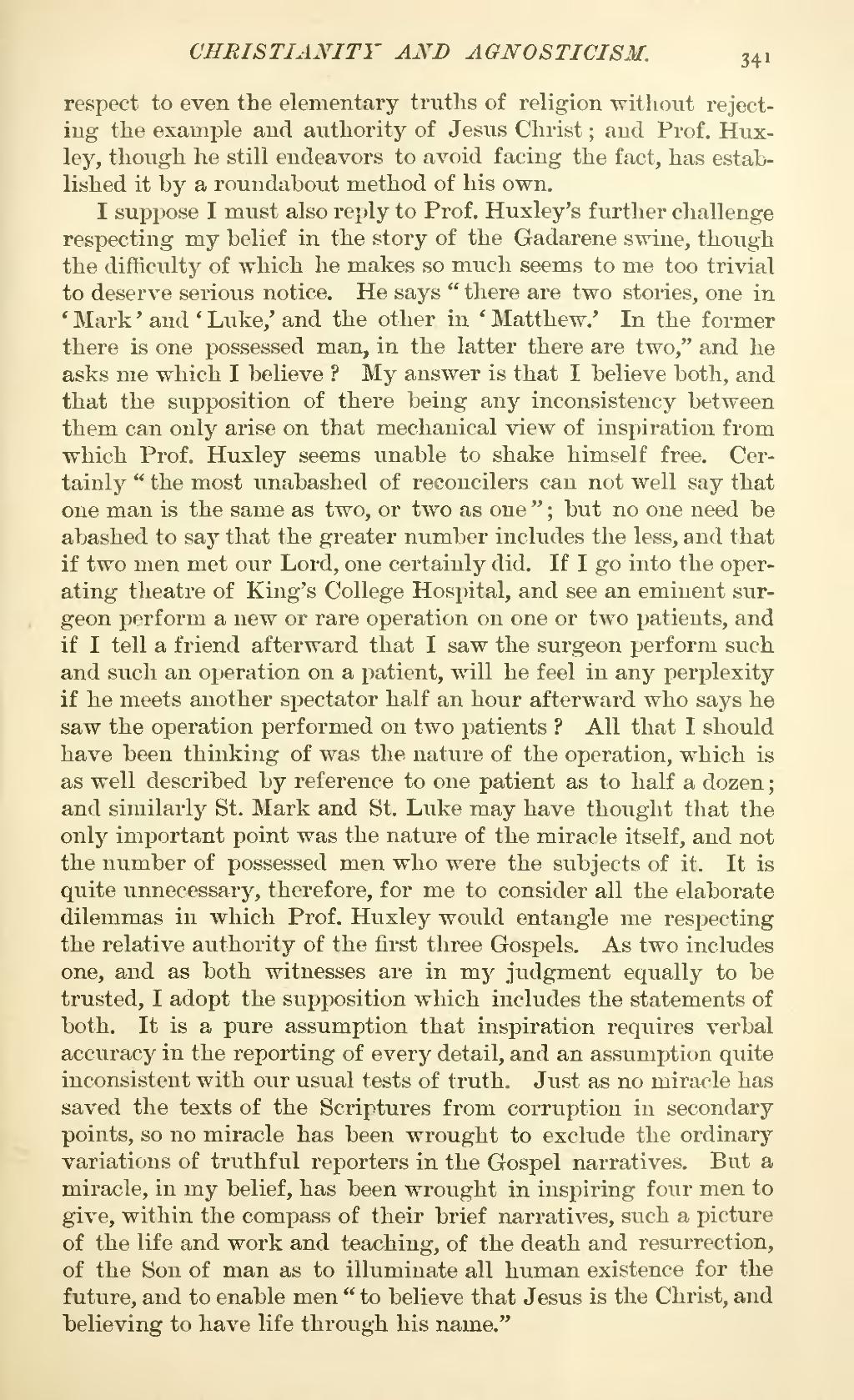respect to even the elementary truths of religion without rejecting the example and authority of Jesus Christ; and Prof. Huxley, though he still endeavors to avoid facing the fact, has established it by a roundabout method of his own.
I suppose I must also reply to Prof. Huxley's further challenge respecting my belief in the story of the Gadarene swine, though the difficulty of which he makes so much seems to me too trivial to deserve serious notice. He says "there are two stories, one in 'Mark' and 'Luke,' and the other in 'Matthew.' In the former there is one possessed man, in the latter there are two," and he asks me which I believe? My answer is that I believe both, and that the supposition of there being any inconsistency between them can only arise on that mechanical view of inspiration from which Prof, Huxley seems unable to shake himself free. Certainly "the most unabashed of reconcilers can not well say that one man is the same as two, or two as one"; but no one need be abashed to say that the greater number includes the less, and that if two men met our Lord, one certainly did. If I go into the operating theatre of King's College Hospital, and see an eminent surgeon perform a new or rare operation on one or two patients, and if I tell a friend afterward that I saw the surgeon perform such and such an operation on a patient, will he feel in any perplexity if he meets another spectator half an hour afterward who says he saw the operation performed on two patients? All that I should have been thinking of was the nature of the operation, which is as well described by reference to one patient as to half a dozen; and similarly St. Mark and St. Luke may have thought that the only important point was the nature of the miracle itself, and not the number of possessed men who were the subjects of it. It is quite unnecessary, therefore, for me to consider all the elaborate dilemmas in which Prof. Huxley would entangle me respecting the relative authority of the first three Gospels. As two includes one, and as both witnesses are in my judgment equally to be trusted, I adopt the supposition which includes the statements of both. It is a pure assumption that inspiration requires verbal accuracy in the reporting of every detail, and an assumption quite inconsistent with our usual tests of truth. Just as no miracle has saved the texts of the Scriptures from corruption in secondary points, so no miracle has been wrought to exclude the ordinary variations of truthful reporters in the Gospel narratives. But a miracle, in my belief, has been wrought in inspiring four men to give, within the compass of their brief narratives, such a picture of the life and work and teaching, of the death and resurrection, of the Son of man as to illuminate all human existence for the future, and to enable men "to believe that Jesus is the Christ, and believing to have life through his name."
